-
Posts
41 -
Joined
-
Last visited
Content Type
Profiles
Forums
Blogs
Gallery
Events
Store
Posts posted by Langers
-
-
3 hours ago, Simius Rex said:
Unfortunately, that is not the impression you communicated. When you stated that "Sadly no knowledge of the original owner, but this is a delightful group" it implies that the bar is unattributed. I do not believe that a random assemblage of medals suspended from a modern medal bar could possibly have an "original owner" in the sense that experienced collectors use that term.
Oh shut up and bugger off.
Stop gate keeping and get over yourself.
1 -
22 minutes ago, Simius Rex said:
You purchased it from a Saxe-Weimar soldier from WW1? Those Saxons have remarkable longevity. A daily diet of Saxon yoghurt is their secret, I believe.
I am sorry to have to tell you that every single ribbon installed on this bar was fabricated WELL after 1945. In other words, it is a modern creation. I think a ribbon-identification tutorial is in order in light of the other medal bar that you posted several weeks ago. If you are going to collect these bars, and you don't want to get stuck with repros, you need to be able to identify weft and warp threads AT THE VERY LEAST.
You can post a back of the bar if you wish, but the front has already conveyed the essence of the matter. (The medals themselves, however, look fine.)
I bought it for the medals, not the bar. I collect medals, not ribbons.
10 minutes ago, Simius Rex said:Here is a quick review of what a period-original medal bar's ribbons must look like in order to be genuine. This doesn't mean that a bar can't be assembled using original ribbons. That requires a careful analysis of materials, technique, backing, devices, etc. and that kind of capability comes from years and years of experience.
Photo #1 below shows a period-original ribbon. Study the 2 edges carefully. A diagram of this ribbon's weft and warp weave-pattern can be seen in photo #2.
Thanks for the tip.
0 -
49 minutes ago, VtwinVince said:
Please show an image of the reverse.
I can’t; the file is too large. I’ll try again later.
0 -
Here is a recent purchase from a Saxe-Weimar soldier from WW1.
They consist of:
• Iron Cross II Class (Prussia)
• Military Order of St. Henry Silver Medal (Saxony)• Merit Medal Wilhelm Ernst Bronze (Saxe-Weimar)
• Friedrich Cross (Anhalt)
• IX Years Service Medal (Saxe-Weimar)
The Military Order of St. Henry Silver Medal has a makers mark for F.U. (Friedrich Ulbricht).
Sadly no knowledge of the original owner, but this is a delightful group!
Stay Safe!
0 -
On 16/04/2021 at 16:36, Tony Farrell said:
I'd say they were either East African Rifles or Uganda Rifles, i.e. pre-KAR. They appear to be wearing a Gurkha-style rifles uniform with Kilmarnock caps that may have been adopted by a contingent visiting the UK for the coronation of Edward VII, as the local tropical drill uniform would've been unsuitable for the UK climate. I can't quite make out the medal ribbons, but they look jubilee-ish, so it could even be a visit for the 1897 jubilee. Nothing concrete on this, just gut. It looks like it was taken in the UK.
Thanks for your words. I did some more research & it appears to be for the 1897 Jubilee indeed!
0 -
12 hours ago, Claudius said:
None that I'm aware of. Only in a humorous fashion we are trying to find other uses for fake medals. Sadly, they do come up very regularly and the in the past it was suggested that they would be better used as; inexpensive collector's copies, costume jewelry or on a reenactor's uniform.
Don't take it personally. I once bought a Naval Observer's badge that I was sure was real. I even bought it from a recognized dealer and it also had maker-marks and purity marks that would convince any lightly knowledgeable person. It was a bad badge and I had to limp back to the seller to get my money back.
I’m with you, thanks for filling me in!
it raised a red flag what with the Berlin 1914 markings (seemed very unlikely), but thought I’d double check.
It’s probably my naïveté, but it really bothers me that people produce fakes to sell for profit. The whole early post-war replacement issues is fine to me, but people nowadays dumping some modern trash in the garden to weather then sell as original is just downright awful.
1 -
I’m guessing that there’s a backstory here?
0 -
1 hour ago, VtwinVince said:
Nice fishing lure.
I’m guessing that it’s a fake, then?
0 -
-
Hi all,
Im interested in buying this photo online, however, I have no idea what unit these men are from.
Any ideas??
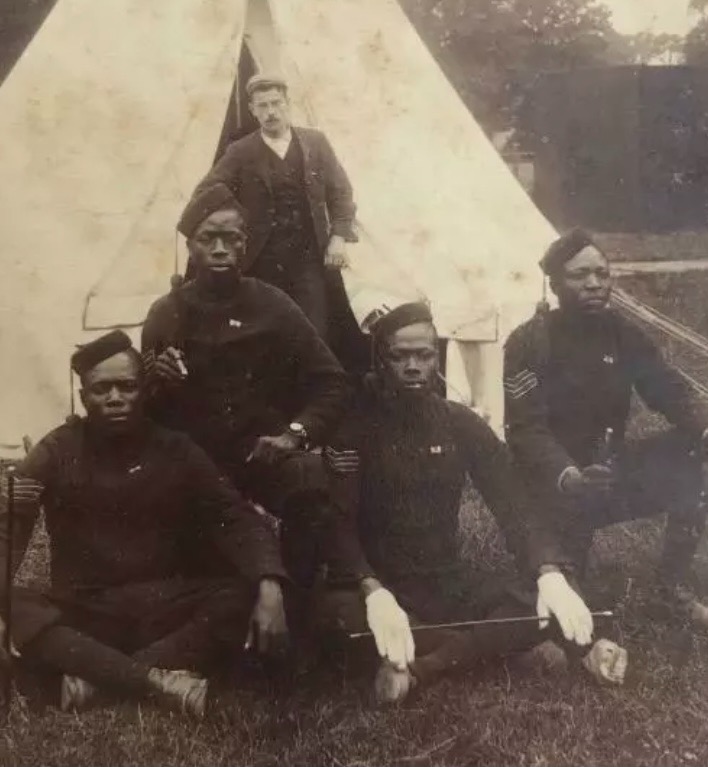 0
0 -
1 hour ago, Chris Boonzaier said:
Very interesting! I have a side collection of documents, Photos, awards to the 12th bavarian Inf regt.... have never seen the 100 Year medal mounted on a bar!
That must make good reading!

It struck me when I saw it; the owner must have really put in the time to do this.
0 -
Here we have an ordensspange consisting of official, and less official, medals which were awarded to a Bavarian soldier of Königlich Bayerische 12. Infanterie-Regiment Prinz Arnulf. It consists of:
* Iron Cross II Class
* 1914-1918 Hindenburg Medal
* 1814-1914 12 Royal Bavarian Infantry Regiment Medal
* 1813-1913 Major v. Lutzow Medal
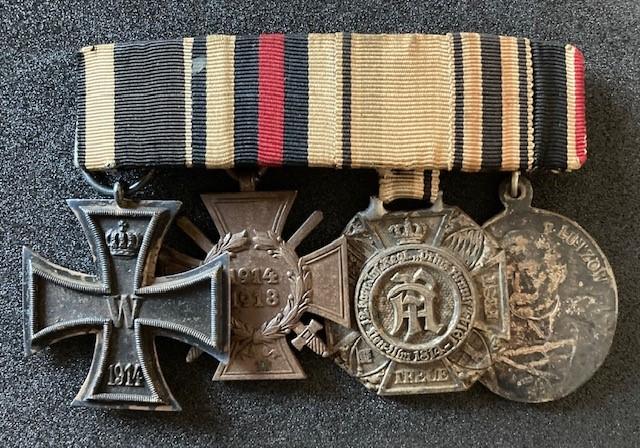
The reverse:
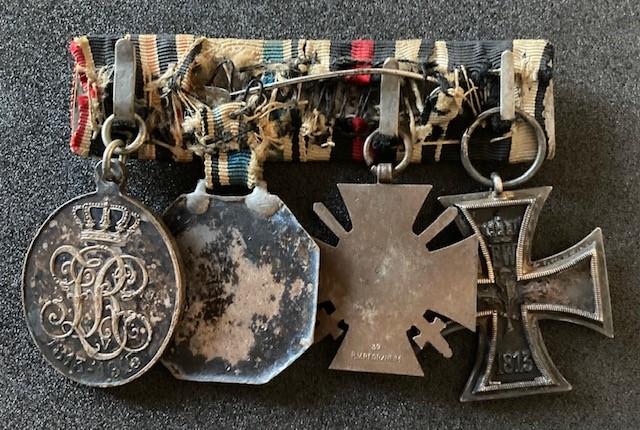
Other than being a Bavarian, all that can be deduced by this medal group is that he was a pre-war serving soldier (c.1913) who survived until at least 1933.
Interestingly, the medal ribbons for the latter two medals are "borrowed" from other veteran associations medals, making the group a little unique. Below I have included a photo of the 1813-1913 Major v. Lutzow Medal for closer examination.
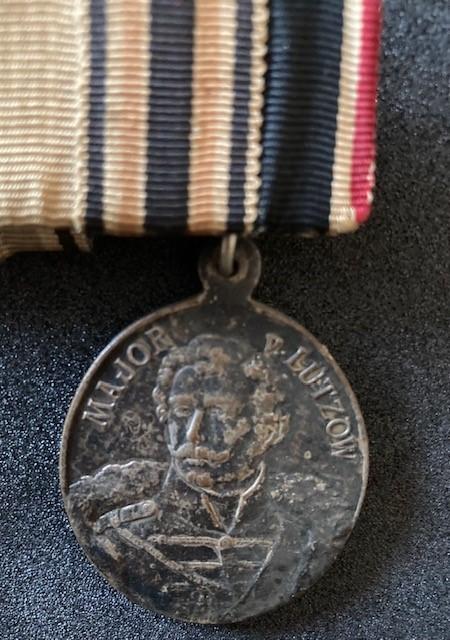
Below is a photo of the 1814-1914 12 Royal Bavarian Infantry Regiment Medal for closer examination.

12 Royal Bavarian Infantry Regiment:1814-1914
The Regiment formed in Wurzburg in 1814 and fought during the 1815 Campaign against France. During the 1866 War Bavaria famously sided with Austria, losing to Prussia, later fighting alongside Prussia during the 1870-1871 Franco-Prussian War.
Kaisheim Guard Command, 1913
12 Royal Bavarian Infantry Regiment: 1914-1918
The Regiment served exclusively on the Western Front during the Great War.
More detail can be read at: Königlich Bayerisches 12. Infanterie-Regiment „Prinz Arnulf“ – Wikipedia
12 Royal Bavarian Infantry Regiment: 1919-1921
Following the Armistice, remnants of the regiment returned to Bavaria (only 193 of the 3,400 original men of the regiment survived). The regiment was demobilised at Neu-Ulm, however, elements joined the Graf Security Battalion of the Freikorps on n1 March 1919. It comprised of four companies, and from May included an additional MG company.
The former regimental staff from Königlich Bayerische 12. Infanterie-Regiment Prinz Arnulf formed the staff of Freikorps Wolf in April 1919. The rest of the formation formed in June, alongside 1 Battalion, Reichswehr-Infanterie-Regiment 43. In August 1921 11 Company, 19 (Bavaran) Infantry Regiment took over Königlich Bayerische 12. Infanterie-Regiment Prinz Arnulf.
Thanks for reading and feel free to leave any feedback!
2 -
2 hours ago, Simius Rex said:
I have a few pre-1933 medal bars made by Ulrich of Hamburg. I have also had the opportunity to closely examine several other medal bars made by Ulrich which are not in my collection. The hardware and the backing material along with the zig-zag-edge are consistent with Ulrich's earlier bars.
Award ribbons in positions 2, 5 and 6 are definitely pre-1945 ribbons. Award ribbons in positions 3 and 4 are definitely post-1945 ribbons. The edges of the EK2 ribbon are too pixelated and/or out-of-focus for an accurate determination of age. A photo in higher resolution would have to be posted.
One thing I can say about Ulrich is that this firm was very careful about mounting the medals so the bottoms of all the awards lined-up in a beautiful, straight line. The medal bar posted above does not exhibit this feature.
Also, Ulrich's bars typically have very carefully folded, neatly overlapping, tightly mounted ribbons that exhibit consistency in their mounting technique, unlike the medal bar above.
One small correction: medal # 5 is not a regimental medal; it is a Weimar era veteran's association membership medal. Very often, we see a metal clasp mounted to the ribbon of this medal indicating the regiment to which the veteran belonged during the War.
It would be interesting to learn where this medal bar was acquired.
.
Well, it may have been partially remounted later down the line.
I can’t remember where it came from. Might have been a dealer mate of mine.
0 -
-
-
-
Here we have an ordensspange belonging to a pre-war cavalry officer of 2. Hannoversche Dragoner-Regiment, Nr. 16.
The group includes:
- Iron Cross II Class
- Hamburg Cross
- 1912 General Honour Decoration
- 1813-1913 Regiment Centenary Medal
- 1914-1918 Regiment Medal
- Military Merit Cross III Class (Austria)
Little is known about the recipient, other than that he was from Hamburg (the bar carries a makers label from Hamburg), was a pre-war serving soldier, and survived until at least the early 1920s.
Below is a brief history of the Regiment, as well as a biography of their service history during the Great War.
2. Hannoversche Dragoner-Regiment, Nr. 16: 1813-1913
The Regiment was formed in 1813 during the Napoleonic Wars, and fought at Waterloo in 1815. As a British territory, it served under the Union Flag, and named The Prince Regents Hussars. Later converting to a Dragoon Regiment (Kron Prinz), they fought Prussia during the 1866 War, losing after Langensalza. After Hanovers incorporation into the German Empire they adopted the title 2. Hannoversche Dragoner-Regiment, Nr. 16. They later served in the 1870-1871 Franco-Prussian War.

Luneburg: The location of the Regiments HQ.
2. Hannoversche Dragoner-Regiment, Nr. 16: 1914-1919
1914-1916: Flanders & Russian Poland
With the outbreak of the First World War and mobilization, a sixth squadron was set up in the regiment, and the Regiment was divided into two semi-regiments (1st, 3rd and 5th squadron, 2nd, 4th and 6th squadron). These were assigned to the 17th and 18th Divisions as divisional cavalry. The units crossed the Belgian border near Liège in the Xth Army Corps and participated in the advance through Northern France. After the withdrawal from the Marne in November 1914, the 1st half-regiment was transferred to the Eastern Front to Russian Poland, where it remained until the end of 1915. In the West, the second half-regiment provided railway and canal protection until 1916.
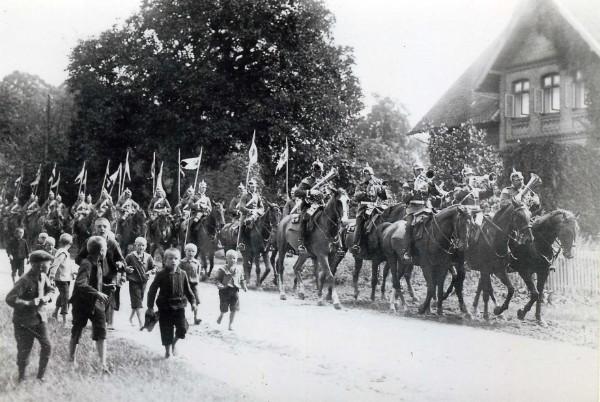
2. Hannoversche Dragoner-Regiment, Nr. 16, possibly during the Great War
1916: France & Romania
After the return of the 1st half-regiment from the East, the regiment was reunited and used for field work in the occupied territories of France. Then the Regimentverband was dissolved again and distributed the individual squadrons to various battlefields, where they were dismounted and used as infantry or as mounted rear-area security.
The 6th squadron took part in the campaign in Romania in late 1916. The Military Merit Cross III Class was possibly issued at this time, as in December 1916 Franz Joseph authorised crossed swords to be worn on the ribbon.
In January 1919, the regiment returned to Luneburg in an escadron manner, was demobilized and dissolved until 15 March 1919.
2. Hannoversche Dragoner-Regiment, Nr. 16: 1919-1939
Two Squadrons under Bothmer were re-formed into Freikorps von Hndenburg on 8th March 1919, and operated mainly in Pomerania, and in March 1920 in Hanover during the Kapp Putsch. Freikorps von Hindenburg consisted of:
25 officers, 167 Unteroffizierre, 573 men, 139 horses and 10 vehicles
1 Sturmbtl., die Eskadron von Bothmer, 3 Inf.-Komp., 1 MG-Komp., 1 MW-Komp., 1 Schwadron, 1 Nachrichtenzug, 1 Rekrutendepot.

On March 10 1920 Eskadron von Bothmer were recieved by von Hindenburg on celebrating the units first anniversary.
In June 1921 Eskadron von Bothmer had been engaged in fighting in Obersilesia.
On 1 September 1921 the two squadrons of Eskadron von Bothmer disbanded and were incorporated into the Reichswehr. 4th Squadron joined 13th (Prussian) Cavalry Regiment in Luner, 3rd Squadron continuing the tradition of 2 Hanover Dragoon Regiment Nr. 16. 13th Cavalry regiment was dissolved in 1939; its squadrons sent to other cavalry reconnaissance units.
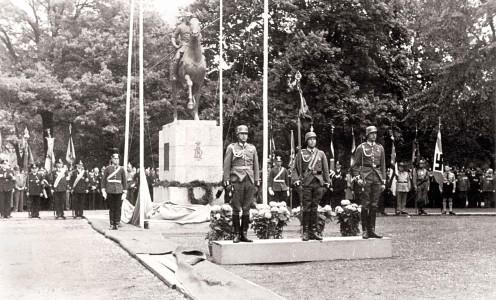
Unveiling the 2. Hanoverian Dragoon Regiment Nr. 16 memorial, 17 September 1922
I hope you enjoyed this little piece & feel free to give me any feedback below!
0 -
I have a recipient by the name of L. Falke. Canny find him.
any clues where to look for rolls?
All the best
chris
0 -
17 hours ago, Schießplatzmeister said:
Hello,
If I am not mistaken, this grouping was for sale on Ebay recently. And, if I recall correctly, the seller mentioned that the missing pieces had been "replaced". But, my memory may not serve me correctly. It is obvious to me that the group did belong to the NCO in the first photo. At some point however the awards at the 2nd and 3rd positions on the group were removed. The pieces in the 2nd and 3rd positions now may never have been awarded to the NCO in the photo who was the owner of the group.
Regardless of the two pieces in question, it is a very nice group with an interesting history. Congratulations on acquiring it.
Best regards,
Hi there,
Yes, the Mecklenburg Schwerin piece was a replacement (got lost at some time).
The MVO was still attached to a piece of ribbon, but had become detached at some point.
Thank very much :)
17 hours ago, laurentius said:What if the picture shows a 2nd class cross with swords and crown rather than a 1st class with swords and crown? The second class had a larger pool of recipients and they can hardly be distinguished in black-and-white pictures. It is not uncommon for more common awards to be switched out for rarer ones. This would explain why the name Kalbe isn't mentioned in the lists and the 'mysterious' origin of the cross on the bar.
Kind regards, Laurentius
Quite the possibility!
0 -
On 07/03/2021 at 17:49, laurentius said:
You are correct, if I'm not mistaken it is one of the older thread of GMIC. Nice to see some things resurface after a while.
Kind regards, Laurentius
Out of curiosity, would you know how I could find it?
Cheers
Chris
0 -
50 minutes ago, Chris Boonzaier said:
Yup, and the guy in Question was on the regt stab, but I was just curious to see if all the Non Bavarians were on the roll or if the bavarians just said to the regt kommandeur "award 20 crosses" and left it at that...
Good point ?
0 -
1 hour ago, Chris Boonzaier said:
Hi,
Waldo has some good points. But are we differentiating between War time production and Postwar?
I have a set of docs where a soldier wrote to the war ministry to get an award replaced, they wrote back they had none, but there were a number of retailers, medal makers where he could buy a replacement.
I am going to go out on a limb here ans say the 1st pic was taken quite some time after the war, probably when he was already in the USA? The instutution of the Marinekreuz was september 1921, so awards from 1922? The Marinekreuz and regt Medal shows a bar padder, which is not bad, I like the proud padder bars.
I would imagine in 1920s Hollywood being the exotic ex German soldier, he probably actually wore the bar on may occasions.
So depending on the source of the item shown, either a postwar put together with a postwar deschler piece (if they existed) .. or a previous owner/collector exchanged the medals.
As to whether he received one... I agree... very unusual... maybe he recieved a 2nd class and he wanted something more blingy... which invites the question... for a medal so rare... where would he have got one??
Very interesting piece and story IMHO!
I would say from the 1940s pic and the early one, eyes, nose and caterpillar eyebrows may be a natch... more info here.... https://stereoworld.org/wp-content/uploads/2019/07/SW_V29_3.pdf
Although interestingly enough... the article in the link above has a starnge cooincidence... a man who recognised Kahle for bayonetting him at mons... and the same story, but for Meuse Argonne... so "Americanised"
Hi Chris

Very interesting points here!
Personally, I don’t doubt the originality of the MVO (it might be a later addition of his, maybe a a replacement), but it adds to his interesting story

Thanks for the article, I was looking for that!!
0 -
5 minutes ago, waldo said:
Servus Chris, the IR 51 was probably not a Bavarian regiment. Between 1914 and 1920 I did not find any MVK 1, 2 or 3 awarded to "Kahle". Also no award to a non-Bavarian.He was in IR 52. I believe they were Brandenbergers (he may have ended up later in the war with them).
Do you have access to the rolls?
All the best,Chris
0 -
4 hours ago, waldo said:
211.14 kB · 0 downloads Servus from Bavaria, actually I don't want to depress the positive mood but I'm not that enthusiastic about the MVK 1 with the crown and swords. This is an MVK from the manufacturer Deschler. MVK 1 Kr. X were only made by the manufacturers Hemmerle and Leser. There is only one early form of this rare MVK per manufacturer. I am showing the originals of the award, which has only been given 146 times. 8 of them only existed on the war ribbon. 138 were warded on the so-called "Beamtenband", the ribbon for war merit. Originals only have to look like this, so only like this! The VS medallions were made of gold. There was no gold-plated silver. The manufacturing quality of the 1st grade was significantly better than that of the 2nd and 3rd grades. The MVKs were specially well gilded, maybe even fire gilded, and the edges were reworked. The enamel of particularly high quality.
The cases were lined in red, only the manufacturer's markings in the lid were different.Bild 1 = Etui Leser Bild 2 = Medaillon Leser Bild 3 = Etui Hemmerle Bild 4 = MVK Leser Bild 5 = MVK Hemmerle Now the cautious question, where did you get the information that Kahle had a 1st class crown swords? Many greetings WalterThanks for your input here.
To my knowledge, the group is all attributed to Kahle; the first photo of him clearly shows him displaying the complete group.He emigrated to America in 1923, taking the group with him, so, to me, the provenance of the groups originality is there.
I can not access the rolls to check if he is on there, and would love to know if he is indeed in it.
All the best,
Chris
0



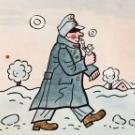
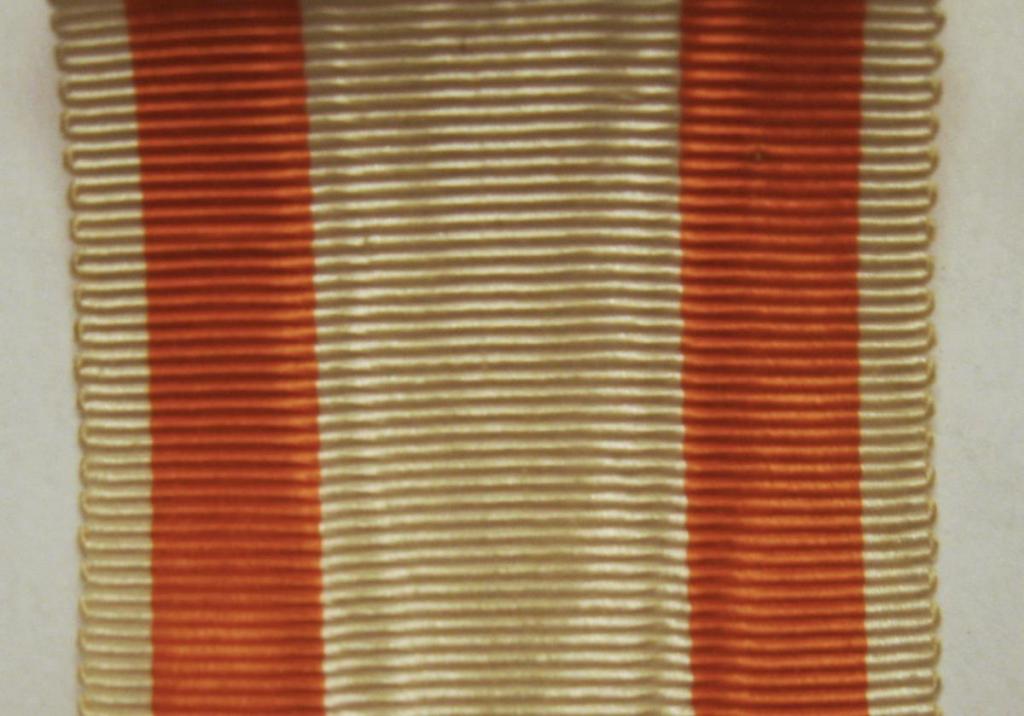
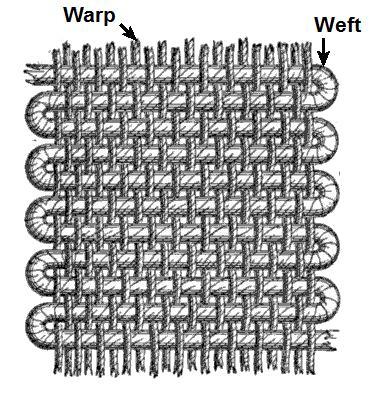

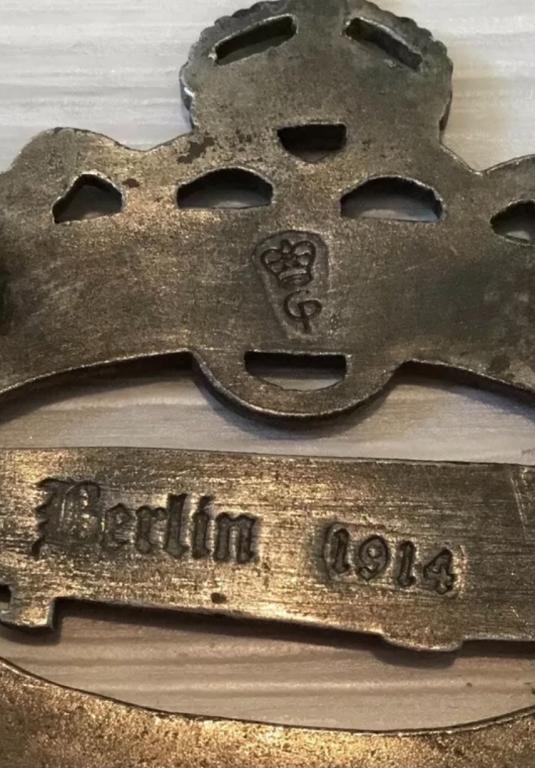
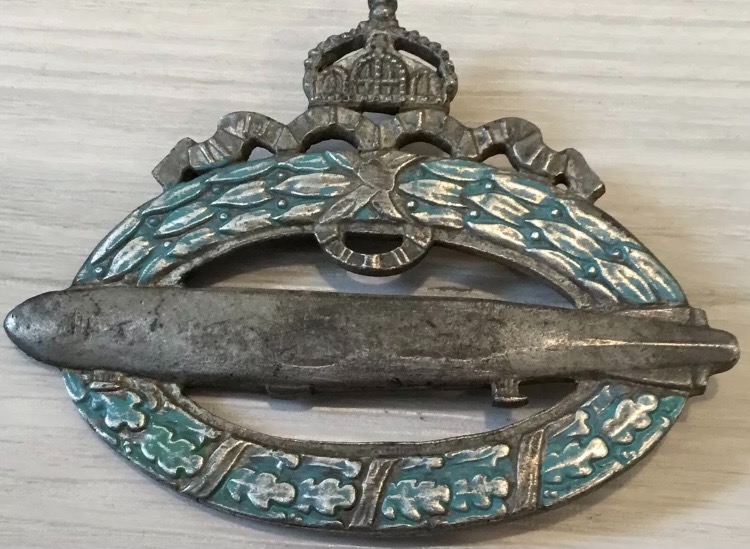

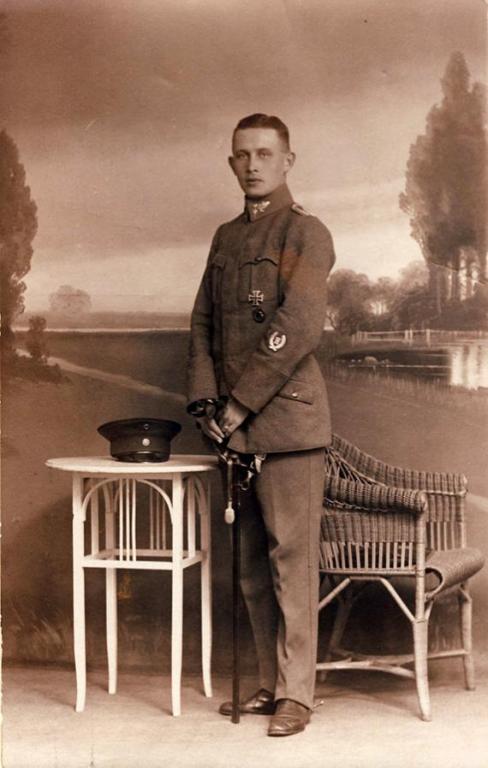
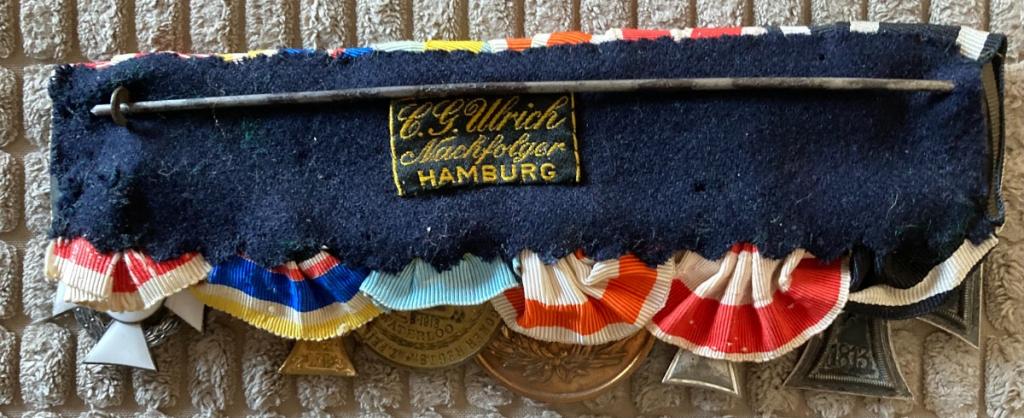


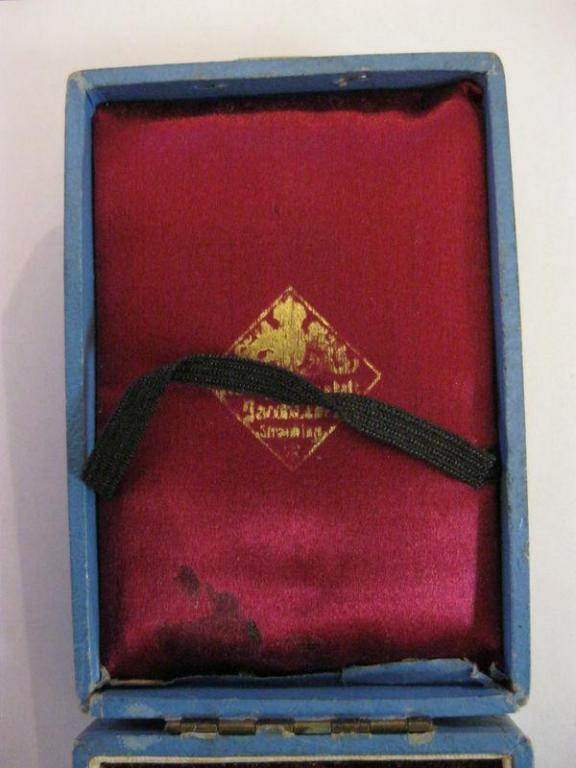
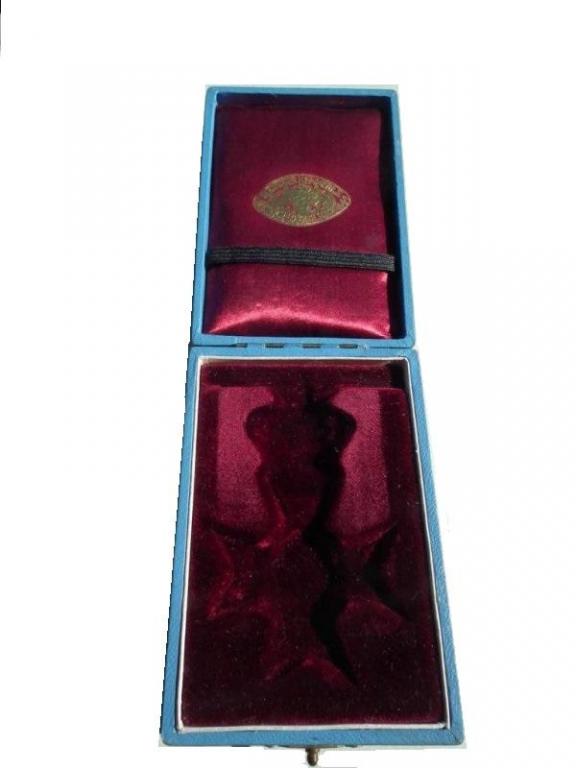
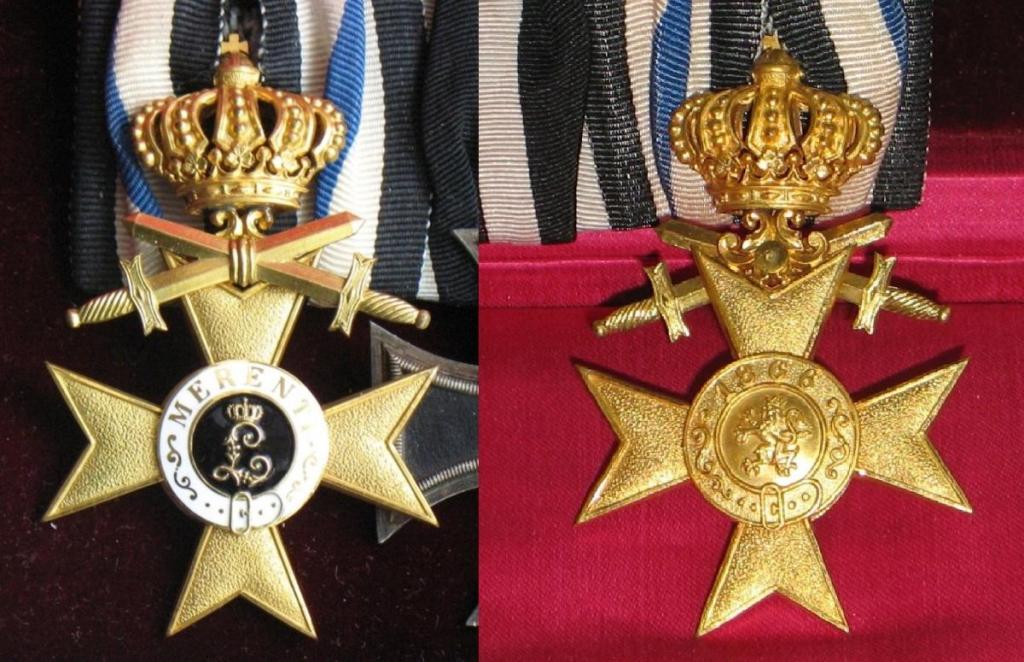

WWI Saxe-Weimar Medal Group
in Germany: Imperial: The Orders, Decorations and Medals of The Imperial German States
Posted
Attitudes like this is exactly what is wrong with militaria and military history followers; it’s too inaccessible, too elitist and too semantic.
I won’t bother here on this site anymore.
Stay safe and take care all.